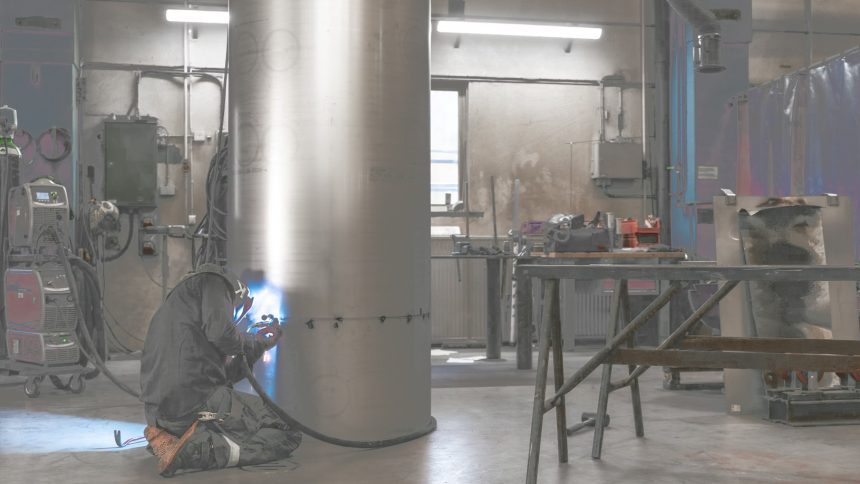Aluminum, an extraordinary and unparalleled metal, boasts a myriad of advantageous attributes that render it a prime choice for diverse projects. Given its exceptional properties, the practice of Tungsten Inert Gas (TIG) welding on aluminum is not an uncommon occurrence.
Aluminum is a difficult material to weld. Here is a guide covering all the major aspects of TIG welding on aluminum.
Welding Town
Frequency Suggestions for AC
Unlocking the Significance of AC Frequency in TIG Welding on Aluminum
As previously highlighted, AC current boasts numerous advantages over DC in the majority of TIG projects involving aluminum. One prominent characteristic of AC is its oscillation between DCEN and DCEP, with the polarity transitioning multiple times per second.
The measurement that quantifies the number of full cycles occurring each second is known as frequency, denoted in Hertz (Hz), which is the reciprocal of a second. But enough with the mathematics; let’s explore its relevance to welding.
Modern TIG machines often grant users the ability to control the frequency of the AC current. Gone are the days when only expensive machines offered such advanced settings. For instance, in a 50 Hz frequency, 50 complete cycles occur within a single second. In each period, the polarity changes twice, resulting in 100 polarity shifts every second.
Understanding and adjusting the AC frequency empowers welders to fine-tune the welding process, optimizing it for specific aluminum welding requirements. By harnessing the potential of AC frequency, welders can attain superior results and impeccable welds on this versatile metal.
High and Low Frequencies in TIG Welding on Aluminum
The Impact of Frequency on Weld Pool Properties in TIG Welding
As you rightly guessed, the frequency setting significantly influences the properties of the weld pool in TIG welding. In most TIG machines, users have the flexibility to select a current frequency ranging from 20 to 250 Hz. Additionally, the arc initiates using high frequency and high voltage settings, often accessible through a dedicated button.
High Frequency:
A higher welding frequency results in a more focused arc cone, enhancing directional control and yielding a narrower weld bead and cleaner weld areas. This attribute proves particularly advantageous for welding in corners, fillet welds, root passes, and various joint configurations, including lap and T-joints. The concentrated arc allows for precise and intricate welding in intricate geometries.
Low Frequency:
In contrast, a lower frequency generates a wider arc cone, leading to a broader weld bead profile while effectively removing impurities from the metal surface. Moreover, it transfers a substantial amount of energy to the workpiece, enabling faster metal deposition, which proves beneficial for applications requiring extended metal deposition.
By leveraging the adjustable frequency feature in TIG welding, welders can tailor the weld pool properties to suit specific welding tasks and achieve impeccable results on aluminum and other materials. Mastering the control of frequency expands the capabilities of TIG welding, making it a versatile and powerful technique in the hands of skilled welders.
What Amperage Should You Use for TIG Welding on Aluminum
The Significance of Amperage in TIG Welding on Aluminum
Amperage, often referred to as the amount of current flowing through the wire and arc, stands as a critical parameter in arc welding, including TIG welding. It quantifies the electric current and is of particular importance when working with aluminum. Amperage is measured in Amperes (A).
You may be wondering how amperage influences TIG welding on aluminum. Similar to other welding processes, amperage primarily affects penetration. TIG welding excels in achieving precise penetration levels, as the welder can establish a stable arc with a controlled amount of current.
In TIG welding on aluminum, amperage is typically controlled using a foot pedal or fingertip control. However, it is crucial to set the appropriate maximum amperage to attain optimal results. Here are general guidelines for amperage requirements based on aluminum thickness:
For 1/8-inch aluminum: 60 to 90 amps
For 1/8-inch aluminum: 125 to 160 amps
For 3/16-inch aluminum: 190 to 240 amps
For 1/4-inch aluminum: 260 to 340 amps
For 3/8-inch aluminum: 330 to 400 amps
A rule of thumb in TIG welding aluminum is to use 1 Ampere for every thousandth of material thickness. For example, welding a base material that is 1/8 inch (0.125 inches) thick would require approximately 125 amps. However, as the material thickness exceeds 1/4 inch, the rule of thumb may deviate, and the required amperage may vary.
Mastering the appropriate amperage settings empowers welders to achieve optimal penetration and control in TIG welding on aluminum, ensuring high-quality and precise welds.











